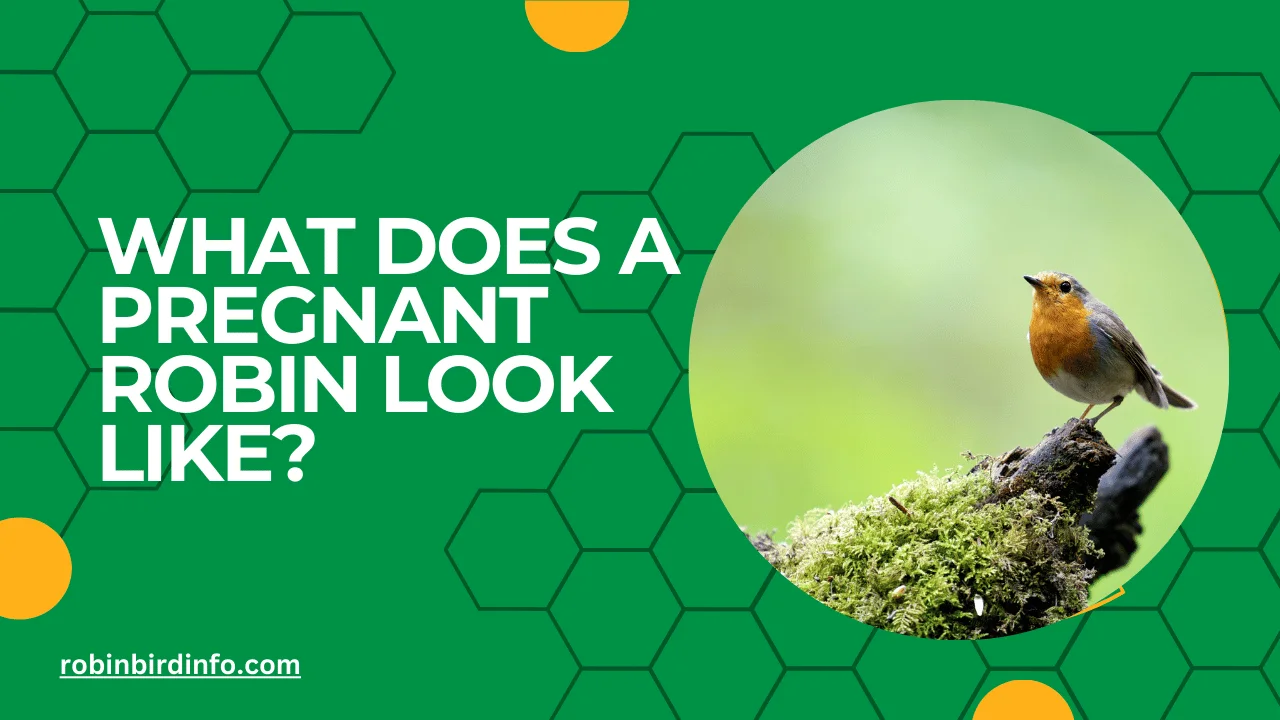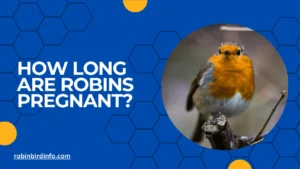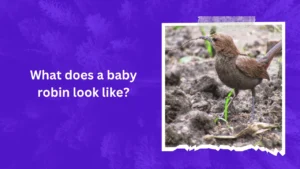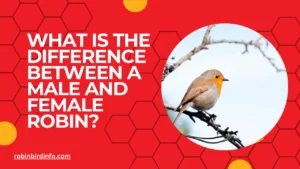Have you ever gazed upon a plump robin hopping across your lawn and wondered, “Wait, is that a pregnant robin?”
Unlike humans and other mammals, birds don’t experience pregnancy in the traditional sense. But that doesn’t mean they don’t go through a fascinating and complex process to raise their young!
While you might not be able to spot a visible baby bump on your backyard robin, there are actually many subtle clues that reveal a robin is gearing up for parenthood. This blog post dives into the intriguing world of Robin reproduction.
We’ll explore the tell-tale signs that a robin is preparing for a new arrival, from their nest-building frenzy to their fierce protectiveness over their territory.
Along the way, you’ll discover the remarkable adaptations these birds have developed to ensure the survival of their offspring. So, grab your binoculars and get ready to witness the wonders of the robin family cycle, all unfolding right outside your window!
Contents
Section 1: The Breeding Season
The Robin breeding season typically begins in early spring, with the exact timing influenced by factors like weather conditions and food availability. As temperatures rise and days lengthen, male Robins establish territories and start singing to attract mates.
Mate selection is a complex process involving courtship displays and vocalizations. Male Robins often perform elaborate songs and aerial displays to impress potential mates. Once a pair bond is formed, the male and female Robin work together to build a nest and raise their young.
Territorial behavior is crucial for Robins during the breeding season. Male Robins defend their territories from other males to ensure exclusive access to resources and potential mates. They use a combination of vocalizations, displays, and physical confrontations to defend their territory.
Section 2: Nest Building and Egg Laying
Once a pair bond is formed, the male and female Robin work together to build a nest. They construct a cup-shaped nest using twigs, grasses, and mud. The nest is typically placed in a sheltered location, such as a tree cavity, a dense shrub, or on a horizontal branch.
The female Robin lays 3-5 eggs in her nest. The eggs are pale blue-green in color and are incubated by the female. The incubation period lasts for approximately 12-14 days.
Section 3: Physical Changes in Breeding Robins
While there aren’t dramatic physical changes like a visible belly, breeding Robins do exhibit some subtle changes. Plumage can appear slightly brighter and more vibrant during the breeding season, particularly in males.
Behavioral changes are more noticeable. Breeding Robins become more territorial and aggressive, defending their nests and young from intruders. They also spend more time foraging for food to feed their growing nestlings.
Weight gain is minimal, as Robins don’t store significant amounts of fat. However, they may experience fluctuations in weight due to changes in food intake and energy expenditure.
Section 4: Parental Care and Feeding
Breeding Robins have increased dietary needs to fuel their energy expenditure and provide for their young. They require a diet rich in protein, including insects, worms, and berries.
Foraging behavior changes during the breeding season. Robins spend more time foraging to collect food for their nestlings. They may visit a variety of habitats, including gardens, forests, and fields, to find food.
Nest defense is a crucial aspect of parental care. Both male and female Robins will aggressively defend their nests from predators and intruders. They may dive-bomb perceived threats or emit loud alarm calls to deter potential predators.
Section 5: Conservation Implications
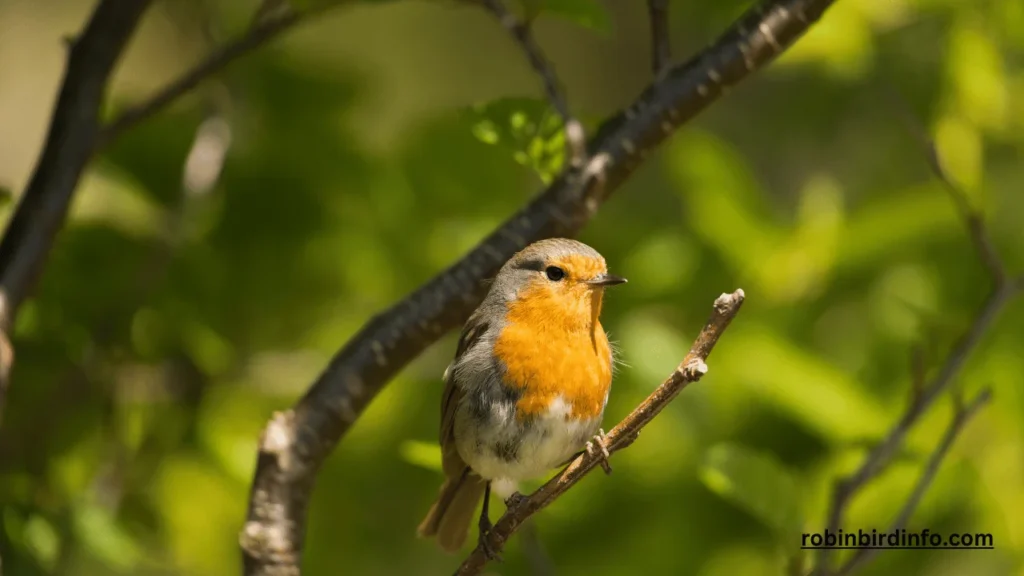
Habitat loss and fragmentation pose significant threats to Robin populations. Loss of suitable nesting and foraging habitat can reduce breeding success and limit population growth.
Pesticide use can negatively impact Robin populations by reducing the availability of insect prey. Pesticides can harm or kill insects, reducing the food supply for both adult and juvenile Robins.
Conservation strategies are essential to protect Robin populations. These strategies include habitat conservation, reducing pesticide use, and promoting bird-friendly practices. By creating and maintaining bird-friendly habitats, we can help ensure the survival of these beloved birds.
Conclusion
While Robins may not exhibit obvious physical signs of pregnancy, their behavior and activities during the breeding season provide clear indications of their reproductive status.
By understanding the complex behaviors and adaptations of breeding Robins, we can appreciate their remarkable ability to raise their young and contribute to the health of our ecosystems. By protecting their habitats and reducing threats, we can help ensure the continued survival of these beautiful birds.
FAQ’s
How long is a Robin’s incubation period?
The incubation period for Robin eggs typically lasts around 12-14 days.
Do both male and female Robins incubate the eggs?
Typically, only the female Robin incubates the eggs. The male Robin plays a crucial role in protecting the nest and providing food for the female during this time.
What do Robins eat while incubating eggs?
Breeding Robins require a diet rich in protein to support their energy needs and the development of their eggs. They often feed on insects, worms, and berries.
How often do Robins feed their young?
During the early stages of nestling development, parent Robins may feed their young every 15-20 minutes. As the nestlings grow older, the frequency of feeding decreases.
What are some common threats to Robin nests?
Robin nests are vulnerable to various threats, including predation by cats, snakes, and birds of prey. Adverse weather conditions, such as heavy rain and strong winds, can also damage nests.
How can I help protect nesting Robins?
You can help protect nesting Robins by providing suitable nesting sites, such as birdhouses or dense shrubs. Avoid disturbing nests and keep cats indoors. Additionally, planting native plants that attract insects can provide a natural food source for Robins.

